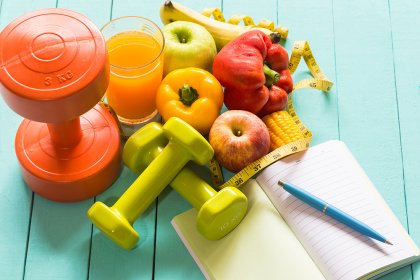1. Diet must match your training
Everyone has seen or knows somebody, who trains incredibly hard, but at best, sees no results or even worse, feel more tired during the day, struggle with their daily tasks and loses motivation to continue training. Usually the issue will be not what they’re doing in the gym, but what they're doing in the kitchen. You first need to understand what you are trying to achieve. Whether it is to lose weight (body fat), gain muscle or just maintain general health.
All of these require food to fuel your workouts and everyday tasks, and contrary to popular belief, none of the above can be achieved by starving yourself. Instead you need a balanced diet which will fuel and maximise your workouts allowing you to reap lasting long-term benefits. Depending on your goals, your diet can differ in the volume you eat and the things you eat but not whether you eat! If you feel unsure of whether your diet matches your goals, make sure you grab a free food diary from the Health and Fitness staff here at HSV, fill in your food entries and have a chat about what improvements you can make.
2. Rest is important
Another faulty assumption for many is that the gym is where your muscles grow. In reality, training challenges and damages your muscle fibres and it is when you are resting that your muscles are repairing and rebuilding themselves, thus growing bigger and stronger. For this reason you should have a minimum of 24 hours between training a single muscle group. This is one of many reasons why you are advised to sleep between 7 to 10 hours a night. Sleep also provides neurological and mental rest, which are often overlooked aspects of successful training and well-functioning everyday life. It also closely links with the previous paragraph about why proper nutrition is so vital for any type of progress.
3. Stretching has many benefits
Stretching has many benefits and is a vital part of not only any type of training, but is also essential for maintaining mobility as you age. Other benefits of stretching linked to training include improved range of motion for exercises and reduced risk of injuries. It also improves the blood flow to the muscles delivering oxygen and nutrients. That in return improves the quality of your training (stronger muscles and better muscle endurance) as well as improving recovery time and reducing post training muscle soreness (DOMS). If you want to learn more about what type of stretches to do for different body parts, you can visit this website.
4. Try to train smarter and not harder
You need to know your goals. Depending on what you wish to achieve, your training can differ in the amount of exercises you do, rep and set ranges, rest times, loads and much more. For example, if you want to grow your muscles you need to challenge and exhaust them. Keep a strict timing of your rest times and select weight you can do quality 8-12 reps with. If you are trying to improve your cardiovascular endurance, sprints and high intensity training works better than a long time of moderate difficulty training. Don’t spend hours in the gym not pushing yourself to limits. Jason Statham once said this about why he keeps his training short but intense: ‘You can bang a nail with a pen for a million times but it won’t go in the board, hit it once with a hammer and it will be in’.
Last, but not least, correct technique and good form will benefit your training a lot more and teach you better control of your body then just ‘getting the weight up’. If you feel unsure of what you are doing or think that what you are doing is not giving you results, have a chat with one of our trainers about how you can improve your training!
5. Set realistic goals to keep yourself motivated
An important part of your training is motivation. If you are motivated, see results and are happy with what you are doing, you are more likely to be consistent with your training. The best tool to achieve this is to set realistic goals which you can then reach for. That can serve you as a driving tool and, by doing regular progress checks, will help you see if what you are doing is actually helping you! However, you need to have an understanding of what a realistic rate for progress could be, so that you would not get demotivated by not achieving what you had initially expected.
To begin with, you need to record and have an understanding of what your starting point is. A useful tool for measuring your current condition – lean muscle mass, body fat, BMR etc - is the Boditrax scan. Then we can use this data and your long term goals to advise you on what realistic timescale for achieving your goals could be.
For example, people looking to lose weight would be looking at trying to lose between 1lb-2lb (0.45kg-0.9kg) per week. To achieve this, every day you should eat between 500-1000k cal less then you burn during the day. Quicker fat loss is not advisable as it carries risk of acquiring health problems as well as making the fat loss less sustainable over longer periods of time. To track how many calories you consume, try tracking your meals using the My Fitness Pal app.
For more information, talk to one of our Health and Fitness staff.

